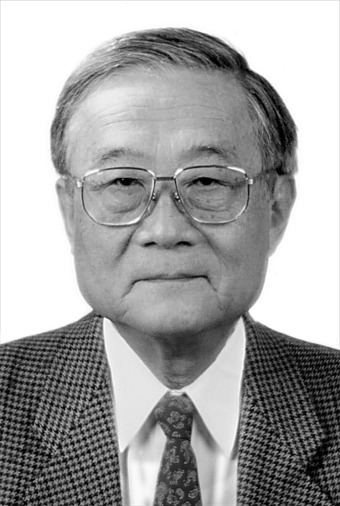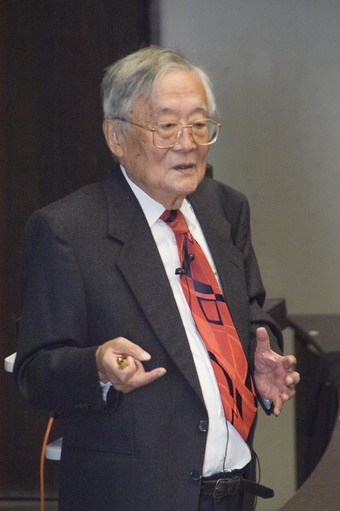Trauer um Professor Haruhiko Morinaga
2018-05-15 – Nachrichten aus dem Physik-Department
Haruhiko Morinaga, geboren in Tokio, studierte an der dortigen Universität Physik. 1951 ging er mit einem Stipendium an die Iowa State University, USA, wo er Assistant Professor wurde. Nach Aufenthalten an der Purdue University, USA, und in Lund, Schweden, kehrte er 1957 nach Japan zurück und wurde 1967 zum ordentlichen Professor der Universität Tokio berufen. 1968 erhielt er den Ruf an die damalige Technische Hochschule München.
Bekannt wurde Morinaga unter anderem durch bahnbrechende Beiträge zur »In-Beam«-Gamma-Spektroskopie. Erstmals beobachtete er Gammastrahlung nach der Bestrahlung von Targets mit Alpha-Strahlen und entwickelte auf dieser Grundlage eine Methode, um die Kernstruktur bei hohen Drehimpulsen und den Reaktionsmechanismus nach Compundkernbildung zu untersuchen – Grundlage für die moderne Kernspektroskopie bei höchsten Drehimpulsen.
Auf einer Idee von Morinaga beruht die Verwendung der interdigitalen H(IH)-Struktur als Hochfrequenzlinearbeschleuniger zur Teilchenbeschleunigung. Als erster Beschleuniger dieses Typs nahm 1976 der Schwerionen-Nachbeschleuniger »SchweIN« am Beschleunigerlabor in Garching den Betrieb auf. Er ist heute Ausgangspunkt für eine Vielzahl weiterer Beschleunigerentwicklungen und deren Anwendungen.
Am Beschleunigerlabor der LMU und TUM war Morinaga mehrfach Vorsitzender des Forschungskollegiums. Auch nach seiner Emeritierung 1991 blieb er der Physik treu, befasste sich etwa eingehend mit Fragen der nicht-nuklearen und nicht-fossilen Gewinnung und Speicherung von Energie.
Morinaga hat eine große Zahl an Publikationen verfasst und ist Mitautor des Buchs »In-Beam-Gamma-Ray-Spectroscopy«.
Zu seinen Auszeichnungen gehört der Nishina-Memorial-Preis; 1984 verlieh ihm die Universität Lund die Ehrendoktorwürde.
Weitere Informationen
- Professor Haruhiko Morinaga feiert 95. Geburtstag – 2017-10-10
Ein Modell, das Haruhiko Morinaga zu wichtigen angeregten Zuständen von bestimmten Atomkernen gemacht hat, ist auch nach 50 Jahren noch Gegenstand intensiver Forschung. Neuere Untersuchungen haben es sich im Wesentlichen bestätigt.
- APS Physics (2017, auf englisch): Viewpoint: Watching the Hoyle State Fall Apart
- IOP PhysicsWorld (2013, auf englisch): The secret of life

